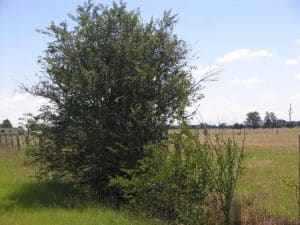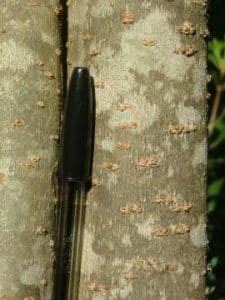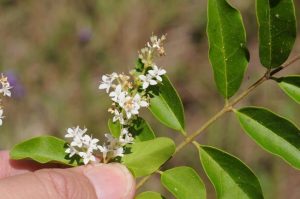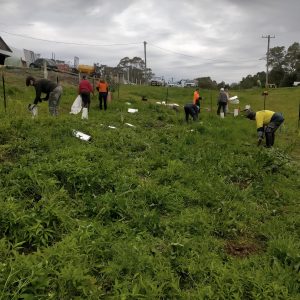With “Spring” coming upon us early as usual, Privet will be starting to flower and prepare itself to pump out its countless millions of bird-lolly seeds. This rampant woody weed is heavily impacting a lot of our riparian areas by crowding out native vegetation, and its spread year on year can be alarming. With a mature plant capable of producing ten million seeds over a growing season, the best time to get rid of large privets is yesterday.
We have both narrow-leaf and broad-leaf privet, with broad leaf being a larger plant as well as having – broader leaves. Both have pointed oval-shaped, dull green leaves arranged in opposite pairs along the stem, creamy white flowers with a sickly sweet smell, round berries that ripen to a dark purple colour, and distinctive small white lumps on the bark called lenticels.
The scope of the problem can seem overwhelming, but a strategic approach will reap rewards. Where privet is in low abundance, any appearance of it should be cracked down on with extreme prejudice. Where it is already running rampant, ration your weed killing energy by keeping your focus on flowering plants. The flowers are distinctive in appearance and smell, so killing flowering plants is also a good way to ensure you’re not knocking off a native plant by mistake.

Privet gets quite tough quite quickly, but small to medium plants are readily dispatched with the cut and “paint” herbicide technique (apply 75% glyphosate solution in a dripper applicator to freshly cut stumps). If the base is too thick to cut, you can get a good result by cutting and painting all branches and frilling the base.
Large trees are a good target for reducing landscape seed production, but can be challenging to kill. Usually the most efficient option is to stem inject them using a cordless drill and your nearly-neat glyphosate in a drip applicator. Drill holes should angle both downward to retain poison, and angle around the tree to maximise cambium layer exposure. Going deeper than the living cambium layer will result in wasted poison. Holes should be placed at 5cm intervals all around the trunk, and where there are multiple stems at the base, all the way around the inside of each “sub-trunk” as well.
For more on Privet management, check out our Youtube videos “Woody Weed Techniques with Peter Dixon” and “Privet Priorities”
For some hands-on Privet action learning, come to our Woody Weeds Workout at Wootton on August 27th – see the events section for more details.







